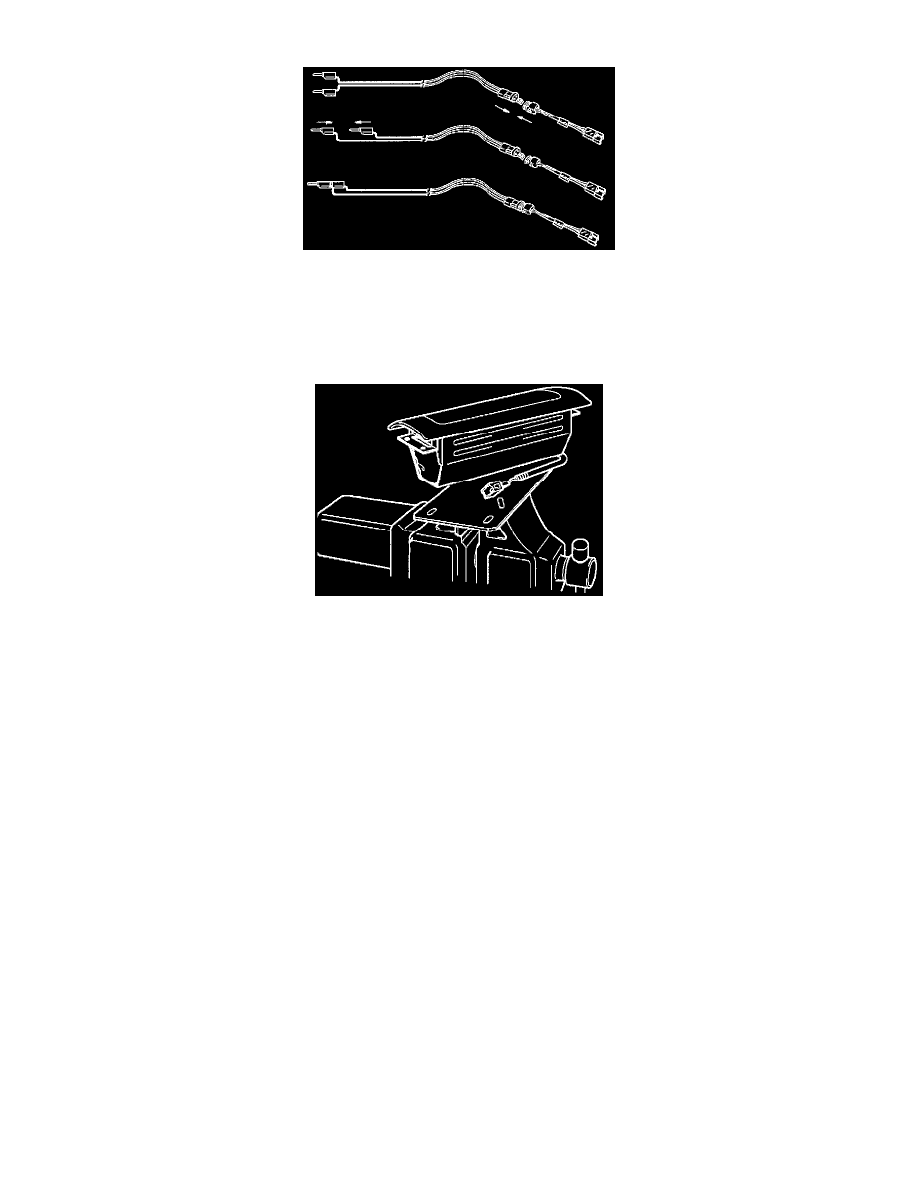Trooper S 4WD V6-3.5L (2002)

shorted and not be connected to a power source until the air bag is to be deployed.
4. Connect the appropriate pigtail adapter to the SRS Deployment Harness.
5. Remove passenger air bag assembly from vehicle. Refer to "Passenger Air Bag Assembly Removal" in this Section 9J-3.
6. Clear a space on the ground approximately 183 cm (six feet) in diameter where the fixture with attached air bag assembly is to be placed for
deployment. A paved outdoor location where there is no activity is preferred. If an outdoor location is not available, a space on the shop floor
where is no activity and sufficient ventilation is recommended. Ensure that no loose or flammable objects are within the deployment area.
7. Place the J-41497 on the bench vice. This is necessary to provide sufficient stabilization of the fixture during deployment.
8. Attach the passenger air bag assembly in the J-41497. An air bag assembly must be mounted such that the bag will deploy upward. SECURELY
HAND-TIGHTEN ALL FASTENERS PRIOR TO DEPLOYMENT.
9. Stretch the SRS Deployment Harness and pigtail adapter from the air bag assembly to its full length.
10. Place a power source near the shorted end of the SRS deployment harness. (Recommended application: 12 volts minimum, 2 amps minimum. A
vehicle battery is suggested.)
11. Connect the air bag assembly to the pigtail adapter on the SRS deployment harness. The SRS Deployment Harness shall remain shorted and not
be connected to a power source until the air bag is to be deployed. The air bag assembly will immediately deploy the air bag when a power source
is connected to it.
NOTE: Ensure that the pigtail adapter is firmly seated into the air bag assembly connector. Failure to fully seat the connectors may leave the
shorting bar located in the air bag assembly connector functioning (shorting the deployment circuit) and may result in nondeployment of the air
bag assembly.
12. Verify that the area around the passenger air bag assembly is clear of all people and loose or flammable objects.
13. Verify that the passenger air bag assembly is firmly and properly in J-41497.
14. Notify all people in the immediate area of your intention to deploy the passenger air bag assembly. The deployment will be accompanied by a
substantial noise which may startle the uninformed.
15. Separate the two banana plugs on the SRS deployment harness.
NOTE: When air bag deploys, the rapid gas expansion will create a substantial noise. Notify all people in the immediate area that you intend to
deploy the air bag assembly.
WARNING: DEPLOYMENT HARNESS SHALL REMAIN SHORTED AND NOT BE CONNECTED TO A POWER SOURCE UNTIL
THE AIR BAG IS TO BE DEPLOYED. THE AIR BAG ASSEMBLY WILL IMMEDIATELY DEPLOY THE AIR BAG WHEN A
POWER SOURCE IS CONNECTED TO IT. CONNECTING THE DEPLOYMENT HARNESS TO THE POWER SOURCE SHOULD
ALWAYS BE THE LAST STEP IN THE AIR BAG ASSEMBLY DEPLOYMENT PROCEDURE. FAILURE TO FOLLOW
PROCEDURES IN THE ORDER LISTED MAY RESULT IN PERSONAL INJURY.
16. Connect the SRS deployment harness wires to the power source to immediately deploy the air bag assembly. Recommended application: 12 volts
minimum, 2 amps minimum. A vehicle battery is suggested.
17. Disconnect the SRS deployment harness from the power source.
